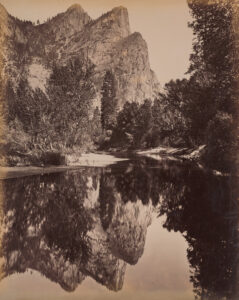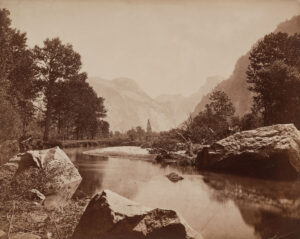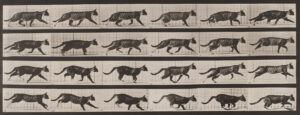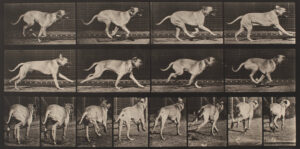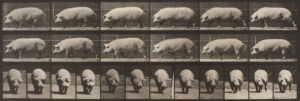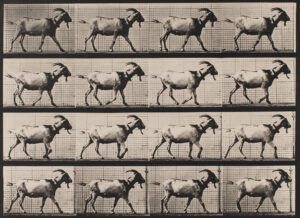Eadweard Muybridge
American, 1830—1904
About
Eadweard Muybridge
American, 1830—1904
Noted for his ingenious and pioneering studies of motion, Eadweard Muybridge is widely recognized as a pivotal figure in the development of motion pictures, and a significant influence on the arts and sciences. Although he intended his photographs to be used as scientific documents and visual aides for artists, his studies of motion are also appreciated as aesthetic works, and have a surprisingly modern sensibility. Born in England and emigrating to the United States in his twenties, Eadweard Muybridge settled in California where he studied under Carleton E. Watkins and mastered the techniques of the collodion wet-plate process.
Muybridge began his career photographing Western landscapes, including a government commissions to photograph the Pacific Coast, and a series of large-format photographs of Yosemite. In 1868, he was appointed West Coast Director of Photographic Surveys for the United States government, and his skillful and highly regarded work won him a medal at the Vienna Exhibition in 1872. The same year, Muybridge began the work that we would become best known for: his motion studies. His famous investigations began by capturing the movements of a running horse in a stop-action sequence, and continued to the locomotion of other animals. In 1876, Muybridge photographed a panoramic of San Francisco from Nob Hill, and for the next fifteen years, worked and lectured widely in America and Europe on the technological advances and applications of photography. Muybridge went on to photograph thousands of motions studies of both humans and animals primarily at the University of Pennsylvania and at the Philadelphia Zoo. Muybridge’s publications include Animal Locomotion (1887), Descriptive Zoopraxography (1893), Animals in Motion (1899), and The Human Figure in Motion (1901).
Mammoth plates
Eadweard Muybridge
View in the Yosemite Valley, Pompompasos, Three Brothers, and Reflections, 4200 Feet, Yosemite Valley, 1872
Mammoth plate albumen silver print from wet collodion on glass negative
21 1/8 x 16 3/4 in.
Eadweard Muybridge
Falls of Yosemite, Great Grizzly Bear, 1872
Mammoth-plate albumen silver print from wet collodion on glass negative
17 x 21 1/2 in.
Eadweard Muybridge
Mammoth plates
Animal Locomotion: Horses
Eadweard Muybridge
Plate 563, "Dusel" hauling, broken log chain, 1872-1885/ printed 1887
Collotype
8 5/16 x 13 in. image on 18 3/4 x 23 3/4 in. paper
Eadweard Muybridge
Plate 565, "Dusel" hauling, 1872-1885 / printed 1887
Collotype
8 7/16 x 14 1/16 in. image on 18 3/4 x 23 3/4 in. paper
Eadweard Muybridge
Plate 566, "Dusel" hauling, 1872-1885 / printed 1887
Collotype
8 15/16 x 12 15/16 in. image on 18 3/4 x 23 3/4 in. paper
Eadweard Muybridge
Plate 567, "Billy" hauling, 1872-1885 / printed 1887
Collotype
8 1/4 x 14 1/4 in. image on 18 1/2 x 23 1/2 in. sheet
Eadweard Muybridge
Plate 577, "Clinton" walking, mounted, irregular, 1872-1885 / printed 1887
Collotype
5 3/4 x 18 3/8 in. image on 18 3/4 x 23 3/4 in. paper
Eadweard Muybridge
Plate 584, "Beauty" walking, saddled, irregular, 1872-1885 / printed 1887
Collotype
7 5/8 x 14 715/16 in. image on 18 3/4 x 23 3/4 in. paper
Eadweard Muybridge
Plate 596, “Eagle” Trotting Free, 1872-1885 / printed 1887
Collotype
14 x 20 in. plate on 19 x 24 in. sheet
Eadweard Muybridge
Plate 599, "Dusel" trotting, bareback, 1872-1885 / printed 1887
Collotype
5 1/4 x 17 13/16 in. image on 18 1/2 x 23 1/2 in. sheet
Eadweard Muybridge
Plate 600, "Dusel" trotting, bareback, 1872-1885 / printed 1887
Collotype
5 1/3 x 16 7/8 in. image on 18 3/4 x 23 3/4 in. paper
Eadweard Muybridge
Plate 604, "Elberon" trotting, saddled, 1872-1885 / printed 1887
Collotype
6 9/16 x 17 13/16 in. image on 18 3/4 x 23 3/4 in. paper
Eadweard Muybridge
Plate 610, "Katydid" trotting, harnessed to sulky, 1872-1885 / printed 1887
Collotype
7 1/8 x 16 3/4 in. image on 18 3/4 x 23 3/4 in. paper
Eadweard Muybridge
Plate 611, "Katydid" trotting, harnessed to sulky, 1872-1885 / printed 1887
Collotype
7 1/4 x 16 1/16 in. image on 18 3/4 x 23 3/4 in. paper
Eadweard Muybridge
Plate 613, "Nellie Rose" trotting, harnessed to sulky, 1872-1885 / printed 1887
Collotype
8 9/16 x 13 3/16 in. image on 18 3/4 x 23 3/4 in. paper
Eadweard Muybridge
Plate 634, “Dan” galloping, saddled, 1872-1885 / printed 1887
Collotype
14 x 20 in. plate on 19 x 24 in. sheet
Eadweard Muybridge
Plate 647, "Pandora" jumping a hurdle, bareback; rider nude, 1872-1885 / printed 1887
Collotype
5 7/8 x 17 3/4 in. image on 18 3/4 x 23 3/4 in. paper
Eadweard Muybridge
Plate 653, “Eagle” Trotting Free, 1872-1885 / printed 1887
Collotype
7 1/2 x 15 in. image on 18 3/4 x 23 3/4 in. paper
Eadweard Muybridge
Animal Locomotion: Horses
-
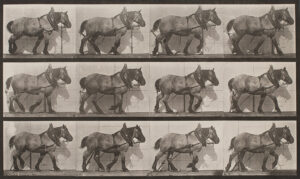
Plate 563, "Dusel" hauling, broken log chain
-
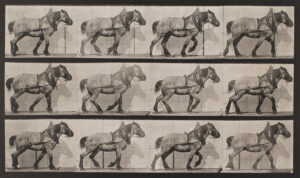
Plate 565, "Dusel" hauling
-
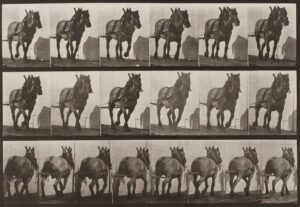
Plate 566, "Dusel" hauling
-
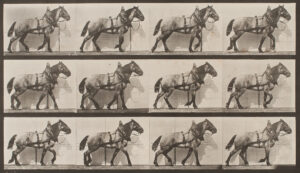
Plate 567, "Billy" hauling
-

Plate 577, "Clinton" walking, mounted, irregular
-
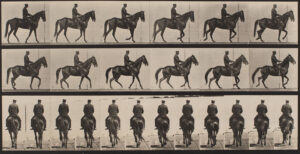
Plate 584, "Beauty" walking, saddled, irregular
-
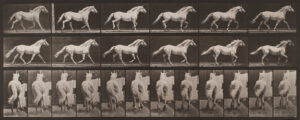
Plate 596, “Eagle” Trotting Free
-

Plate 599, "Dusel" trotting, bareback
-

Plate 600, "Dusel" trotting, bareback
-
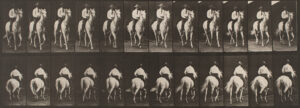
Plate 604, "Elberon" trotting, saddled
-
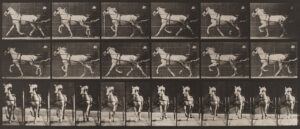
Plate 610, "Katydid" trotting, harnessed to sulky
-
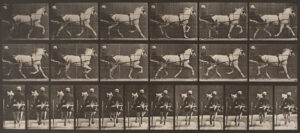
Plate 611, "Katydid" trotting, harnessed to sulky
-
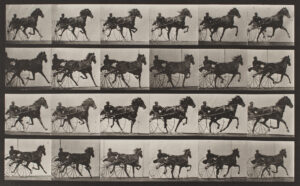
Plate 613, "Nellie Rose" trotting, harnessed to sulky
-
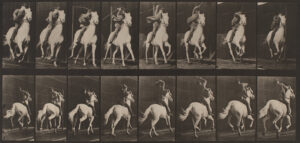
Plate 634, “Dan” galloping, saddled
-

Plate 647, "Pandora" jumping a hurdle, bareback; rider nude
-
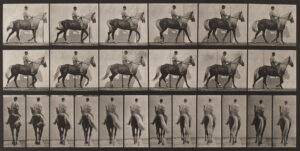
Plate 653, “Eagle” Trotting Free
Animal Locomotion: Birds and Wild Animals
Eadweard Muybridge
Plate 759, Animal Locomotion: Cockatoo flying, 1872-1885 / printed 1887
Collotype
6 11/16 x 17 1/2 in. image on 18 3/4 x 23 3/4 in. paper
Eadweard Muybridge
Plate 762, Animal Locomotion: Cockatoo flying, 1872-1885 / printed 1887
Collotype
7 3/4 x 14 1/2 in. image on 18 1/4 x 23 13/16 in. paper
Eadweard Muybridge
Plate 756, Animal Locomotion: Pigeon flying, 1872-1885 / printed 1887
Collotype
5 5/8 x 18 1/16 in. image on 18 3/4 x 23 3/4 in. paper
Eadweard Muybridge
Plate 760, Animal Locomotion: Cockatoo flying, 1872-1885 / printed 1887
Collotype
8 5/8 x 12 1/2 in. image on 18 1/2 x 23 1/2 in. sheet
Eadweard Muybridge
Plate 695, Animal Locomotion: Elk galloping, 1872-1885 / printed 1887
Collotype
9 1/4 x 12 5/8 in. image on 18 3/4 x 23 3/4 in. paper
Eadweard Muybridge
Plate 749, Animal Locomotion: Baboon climbing a pole, 1872-1885 / printed 1887
Collotype
8 5/8 x 13 13/16 in .image on 18 1/2 x 23 1/2 in. sheet
Eadweard Muybridge
Plate 697, Animal Locomotion: Antelope trotting, 1872-1885 / printed 1887
Collotype
8 5/8 x 13 3/8 in. image on 18 3/4 x 23 3/4 in. paper
Eadweard Muybridge
Plate 687, Animal Locomotion: Fallow deer, buck and group of does, galloping, 1872-1885 / printed 1887
Collotype
7 1/4 x 16 1/8 in. image on 18 3/4 x 23 3/4 in. paper
Eadweard Muybridge
Plate 682, Animal Locomotion: Fallow deer, buck. A: Trotting, B: Galloping, 1872-1885 / printed 1887
Collotype
9 3/4 x 11 3/4 in. image on 18 3/4 x 23 3/4 in. paper
Eadweard Muybridge
Plate 686, Animal Locomotion: Fallow deer, buck and doe, galloping, 1872-1885 / printed 1887
Collotype
8 9/16 x 14 1/8 in. image on 18 3/4 x 23 3/4 in. sheet
Eadweard Muybridge
Plate 684, Animal Locomotion: Two Reindeer, 1872-1885 / printed 1887
Collotype
9 7/8 x 12 3/8 in. image on 18 1/2 x 23 1/2 in. sheet
Eadweard Muybridge
Animal Locomotion: Birds and Wild Animals
-
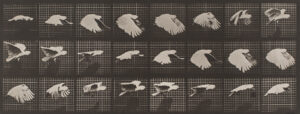
Plate 759, Animal Locomotion: Cockatoo flying
-
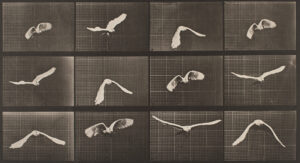
Plate 762, Animal Locomotion: Cockatoo flying
-

Plate 756, Animal Locomotion: Pigeon flying
-

Plate 760, Animal Locomotion: Cockatoo flying
-
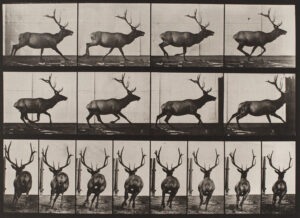
Plate 695, Animal Locomotion: Elk galloping
-
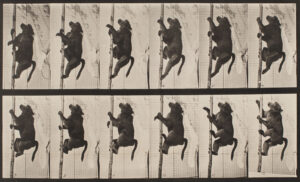
Plate 749, Animal Locomotion: Baboon climbing a pole
-
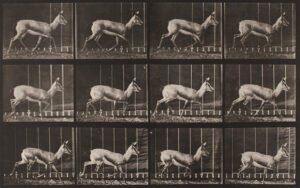
Plate 697, Animal Locomotion: Antelope trotting
-
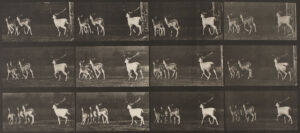
Plate 687, Animal Locomotion: Fallow deer, buck and group of does, galloping
-
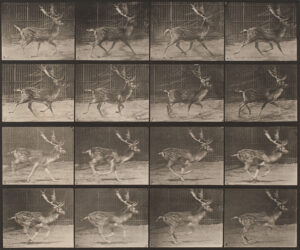
Plate 682, Animal Locomotion: Fallow deer, buck. A: Trotting, B: Galloping
-
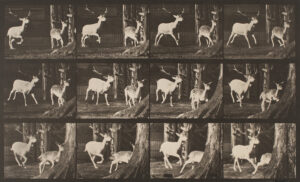
Plate 686, Animal Locomotion: Fallow deer, buck and doe, galloping
-
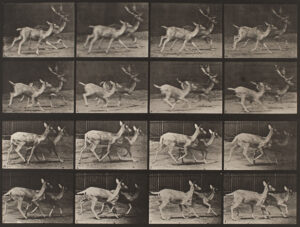
Plate 684, Animal Locomotion: Two Reindeer
Animal Locomotion: Domestic Animals
Eadweard Muybridge
Plate 718, Animal Locomotion: Cat trotting, changing to a gallop, 1872-1885 / printed 1887
Collotype
6 3/4 x 17 5/8 in. image on 18 3/4 x 23 3/4 in. paper
Eadweard Muybridge
"Dread" galloping, 1872-1885 / printed 1887
Collotype
7 9/16 x 15 5/16 in. image on 18 3/4 x 23 3/4 in. paper
Eadweard Muybridge
Plate 673, Animal Locomotion: Sow walking, 1872-1885 / printed 1887
Collotype
6 1/4 x 18 1/4 in. image on 18 3/4 x 23 3/4 in. paper
Eadweard Muybridge
Plate 679, Animal Locomotion: Goat galloping, 1872-1885 / printed 1887
Collotype
7 5/8 x 13 3/8 in. image on 18 3/4 x 23 3/4 in. paper
Eadweard Muybridge
Plate 676, Animal Locomotion: Goat walking, 1872-1885 / printed 1887
Collotype
8 1/4 x 12 7/8 in. image on 18 3/4 x 23 3/4 in. paper
Eadweard Muybridge
Animal Locomotion: Domestic Animals
Animal Locomotion: Males
Eadweard Muybridge
Plate 360, Animal Locomotion: Throwing a spear, 1872-1885 / printed 1887
Collotype
9 x 12 15/16 in. image on 18 1/2 x 23 1/2 in. sheet
Eadweard Muybridge
Plate 27, Animal Locomotion: Walking and carrying a 75-lb. stone on head, hands raised, 1872-1885 / printed 1887
Collotype
9 1/4 x 12 5/8 in. image on 18 3/4 x 23 3/4 in. paper
Eadweard Muybridge
Plate 28, Animal Locomotion: Walking and carrying a 50-lb dumbbell in right hand, 1872-1885 / printed 1887
Collotype
5 15/16 x 18 3/8 in. image on 18 1/2 x 23 1/2 in. sheet
Eadweard Muybridge
Plate 379, Animal Locomotion: Carpenter, planing a board, 1872-1885 / printed 1887
Collotype
9 x 13 1/8 in. image on 18 3/4 x 23 3/4 in. paper
Eadweard Muybridge
Plate 506, Animal Locomotion: Bricklaying, 1872-1885/ printed 1887
Collotype
8 1/8 x 14 3/8 in. image on 18 3/4 x 23 3/4 in. sheet
Eadweard Muybridge
Plate 62, Animal Locomotion: Running, 1872-1885 / printed 1887
Collotype
14 x 20 in. plate on 19 x 24 in. sheet
Eadweard Muybridge
Plate 3, Animal Locomotion: Walking, 1872-1885 / printed 1887
Collotype
7 5/16 x 15 1/4 in. image on 18 1/2 x 23 1/2 in. sheet
Eadweard Muybridge
Plate 5, Animal Locomotion: Walking, 1872-1885 / printed 1887
Collotype
6 1/2 in. image on 18 1/2 x 23 1/2 in. sheet
Eadweard Muybridge
Plate 26, Animal Locomotion: Man walking, carrying a 75-lb. stone on left shoulder, 1872-1885 / printed 1887
Collotype
9 1/2 x 12 3/8 in. image on 18 1/2 x 23 1/2 in. sheet
Eadweard Muybridge
Plate 288, Animal Locomotion: Baseball, error, 1872-1885 / printed 1887
Collotype
18 1/2 x 23 1/2 in. sheet
Eadweard Muybridge
Plate 292, Animal Locomotion: Cricket, batting and back cut, 1872-1885 / printed 1887
Collotype
5 7/8 x 17 9/16 in. image on 18 1/2 x 23 1/2 in. sheet
Eadweard Muybridge
Plate 66, Animal Locomotion: Running, 1872-1885 / printed 1887
Collotype
8 11/16 x 13 13/16 in. image on 18 1/2 x 23 1/2 in. sheet
Eadweard Muybridge
Plate 361, Animal Locomotion: Throwing a spear, 1872-1885 / printed 1887
Collotype
9 1/8 x 12 11/16 in. image on 18 1/2 x 23 1/2 in. sheet
Eadweard Muybridge
Plate 74, Animal Locomotion: Ascending an incline, 1872-1885 / printed 1887
Collotype
8 1/8 x 13 15/16 in. image on 18 1/2 x 23 1/2 in. sheet
Eadweard Muybridge
Plate 88, Animal Locomotion: Ascending stairs, 1872-1885 / printed 1887
Collotype
9 7/8 x 11 3/4 in. image on 18 1/2 x 23 1/2 in. sheet
Eadweard Muybridge
Plate 109, Animal Locomotion: Ascending a stepladder, 1872-1885 / printed 1887
Collotype
7 1/2 x 14 7/8 in. image on 18 1/2 x 23 1/2 in. sheet
Eadweard Muybridge
Plate 381, Animal Locomotion: Mason, laying a brick, 1872-1885 / printed 1887
Collotype
8 x 14 7/8 in. image on 18 3/4 x 23 3/4 in. paper
Eadweard Muybridge
Plate 292, Animal Locomotion: Heaving a 20-lb rock, 1872-1885 / printed 1887
Collotype
8 1/8 x 13 1/8 in. image on18 1/2 x 23 1/2 in. sheet
Eadweard Muybridge
Plate 331, Animal Locomotion: Boxing, stop for cross-buttocks, 1872-1885 / printed 1887
Collotype
18 1/2 x 23 1/2 in. sheet
Eadweard Muybridge
Plate 337, Animal Locomotion: Boxing, open hand, 1872-1885 / printed 1887
Collotype
7 3/16 x 17 3/8 in. image on 18 1/2 x 23 1/2 in. sheet
Eadweard Muybridge
Animal Locomotion: Males
-

Plate 360, Animal Locomotion: Throwing a spear
-
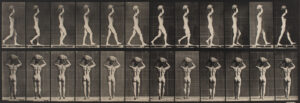
Plate 27, Animal Locomotion: Walking and carrying a 75-lb. stone on head, hands raised
-

Plate 28, Animal Locomotion: Walking and carrying a 50-lb dumbbell in right hand
-
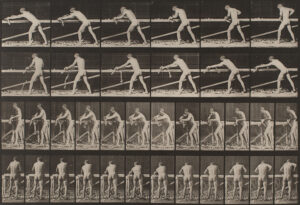
Plate 379, Animal Locomotion: Carpenter, planing a board
-
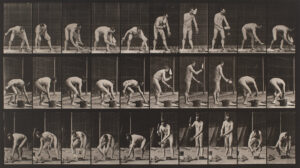
Plate 506, Animal Locomotion: Bricklaying
-
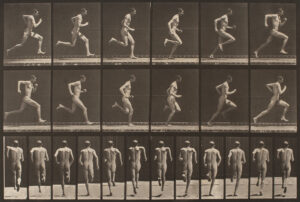
Plate 62, Animal Locomotion: Running
-
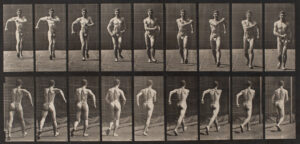
Plate 3, Animal Locomotion: Walking
-
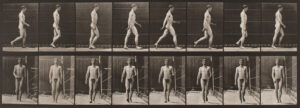
Plate 5, Animal Locomotion: Walking
-
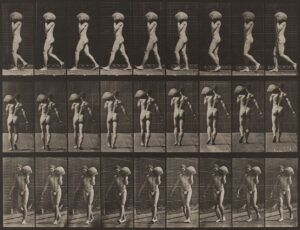
Plate 26, Animal Locomotion: Man walking, carrying a 75-lb. stone on left shoulder
-
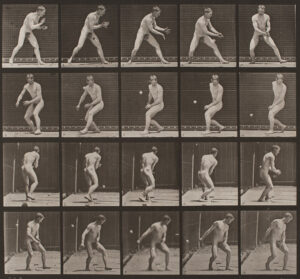
Plate 288, Animal Locomotion: Baseball, error
-
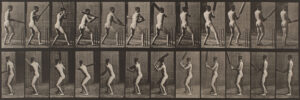
Plate 292, Animal Locomotion: Cricket, batting and back cut
-
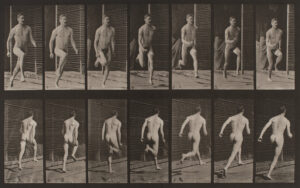
Plate 66, Animal Locomotion: Running
-
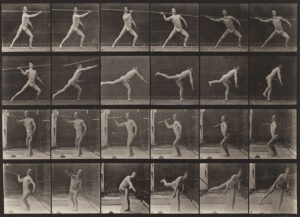
Plate 361, Animal Locomotion: Throwing a spear
-
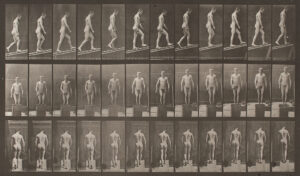
Plate 74, Animal Locomotion: Ascending an incline
-
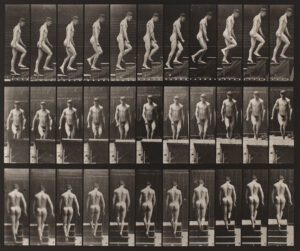
Plate 88, Animal Locomotion: Ascending stairs
-
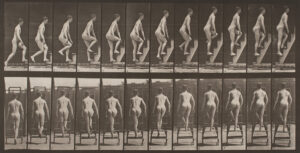
Plate 109, Animal Locomotion: Ascending a stepladder
-
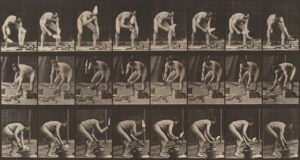
Plate 381, Animal Locomotion: Mason, laying a brick
-
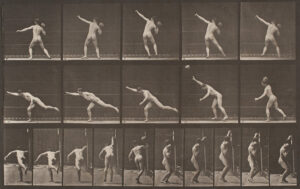
Plate 292, Animal Locomotion: Heaving a 20-lb rock
-
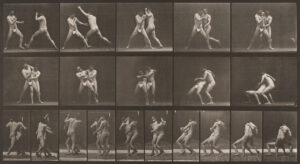
Plate 331, Animal Locomotion: Boxing, stop for cross-buttocks
-
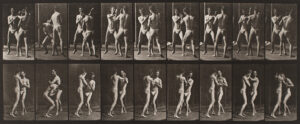
Plate 337, Animal Locomotion: Boxing, open hand
Animal Locomotion: Women and Children
Eadweard Muybridge
Plate 175, Animal Locomotion: Woman Crossing brook on stepping-stones with a fishing pole and can, 1872-1885 / printed 1887
Collotype
6 5/8 x 16 1/2in. image on 18 1/2 x 23 1/2 in. sheet
Eadweard Muybridge
Plate 51, Animal Locomotion: Walking, turning around and using a sprinkling pot, 1872-1885 / printed 1887
Collotype
8 1/8 x 14 in. image on 18 1/2 x 23 1/2 in. sheet
Eadweard Muybridge
Plate 179, Animal Locomotion: Stepping on and over a rock, a basket on head and right hand raised, 1872-1885 / printed 1887
Collotype
8 5/8 x 13 3/4 in. image on 18 1/2 x 23 1/2 in. sheet
Eadweard Muybridge
Plate 176, Animal Locomotion: Crossing a brook on stepping stones with a fishing pole and a basket, 1872-1885 / printed 1887
Collotype
7 15/16 x 15 1/4 in. image on 18 1/2 x 23 1/2 in. sheet
Eadweard Muybridge
Plate 79, Animal Locomotion: Woman Ascending an incline, right elbow bent, 1872-1885 / printed 1887
Collotype
8 9/16 x 14 9/16 in. image on 18 3/4 x 23 3/4 in. paper
Eadweard Muybridge
Plate 20, Animal Locomotion: Woman Walking, right elbow bent, 1872-1885 / printed 1887
Collotype
9 1/4 x 12 5/8 in. image on 18 3/4 x 23 3/4 in. paper
Eadweard Muybridge
Plate 214, Animal Locomotion: Lifting a child from the ground and turning around, 1872-1885 / printed 1887
Collotype
7 3/4 x 14 7/8 in. image on 18 1/2 x 23 1/2 in. sheet
Eadweard Muybridge
Plate 41, Animal Locomotion: Walking; flirting a fan, 1872-1885 / printed 1887
Collotype
8 3/16 x 13 7/8 in. image on 18 1/2 x 23 1/2 in. sheet
Eadweard Muybridge
Plate 206, Animal Locomotion: Carrying a water jar on head, turning and placing it on the ground, 1872-1885 / printed 1887
Collotype
8 1/4 x 14 9/16 in. image on 18 1/2 x 23 1/2 in. sheet
Eadweard Muybridge
Plate 140, Animal Locomotion: Descending stairs, looking around and waving a fan, 1872-1885 / printed 1887
Collotype
11 3/4 x 9 7/8 in. image on 18 1/2 x 23 1/2 in. sheet
Eadweard Muybridge
Plate 215, Animal Locomotion: Placing a child on the ground; the child running off, 1872-1885 / printed 1887
Collotype
6 13/16 x 17 in. image on 18 1/2 x 23 1/2 in. sheet
Eadweard Muybridge
Plate 233, Animal Locomotion: Lifting shawl, putting it around shoulders and turning, 1872-1885 / printed 1887
Collotype
18 1/2 x 23 1/2 in. sheet
Eadweard Muybridge
Plate 97, Animal Locomotion: Woman turning to ascend Stairs, 1872-1885 / printed 1887
Collotype
7 3/8 x 15 7/8 in. image on 18 1/2 x 23 1/2 in. sheet
Eadweard Muybridge
Plate 253, Animal Locomotion: Kneeling; elbows on chair and hands clasped, 1872-1885 / printed 1887
Collotype
7 11/16 x 15 5/16 in. image on 18 1/2 x 23 1/2 in. sheet
Eadweard Muybridge
Plate 305, Animal Locomotion: Picking up a ball and throwing it, 1872-1885 / printed 1887
Collotype
8 1/8 x 14 7/8 in. image on 18 1/2 x 23 1/2 in. sheet
Eadweard Muybridge
Plate 471, Animal Locomotion: Toddler crawling, 1872-1885 / printed 1887
Collotype
7 3/8 x 15 7/8 in. image on 18 1/2 x 23 1/2 in. sheet
Eadweard Muybridge
Animal Locomotion: Women and Children
-
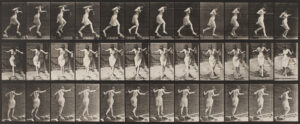
Plate 175, Animal Locomotion: Woman Crossing brook on stepping-stones with a fishing pole and can
-
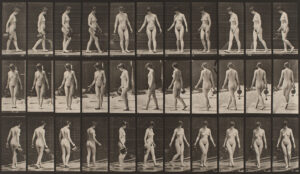
Plate 51, Animal Locomotion: Walking, turning around and using a sprinkling pot
-
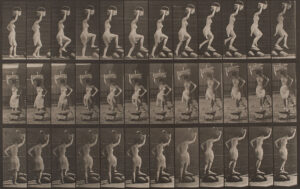
Plate 179, Animal Locomotion: Stepping on and over a rock, a basket on head and right hand raised
-
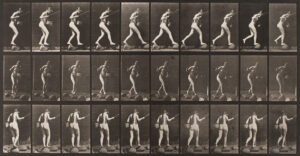
Plate 176, Animal Locomotion: Crossing a brook on stepping stones with a fishing pole and a basket
-
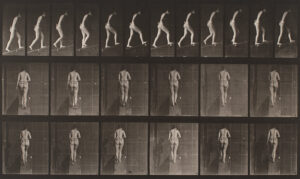
Plate 79, Animal Locomotion: Woman Ascending an incline, right elbow bent
-
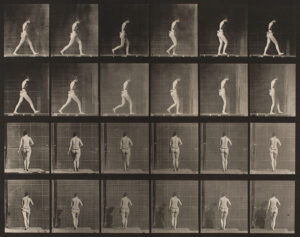
Plate 20, Animal Locomotion: Woman Walking, right elbow bent
-
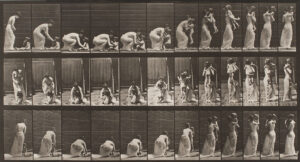
Plate 214, Animal Locomotion: Lifting a child from the ground and turning around
-
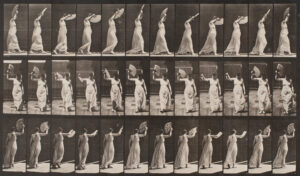
Plate 41, Animal Locomotion: Walking; flirting a fan
-
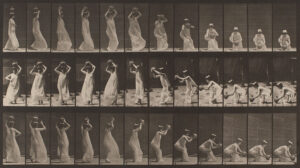
Plate 206, Animal Locomotion: Carrying a water jar on head, turning and placing it on the ground
-
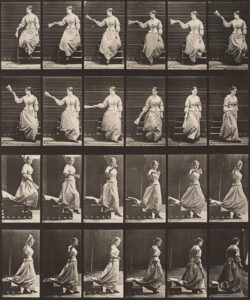
Plate 140, Animal Locomotion: Descending stairs, looking around and waving a fan
-
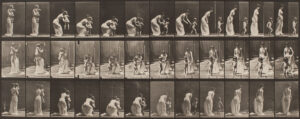
Plate 215, Animal Locomotion: Placing a child on the ground; the child running off
-
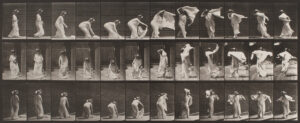
Plate 233, Animal Locomotion: Lifting shawl, putting it around shoulders and turning
-
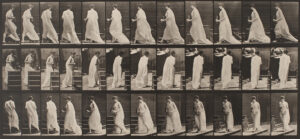
Plate 97, Animal Locomotion: Woman turning to ascend Stairs
-
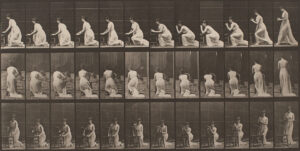
Plate 253, Animal Locomotion: Kneeling; elbows on chair and hands clasped
-
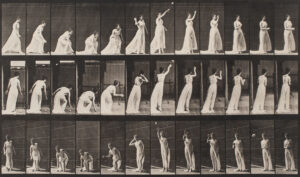
Plate 305, Animal Locomotion: Picking up a ball and throwing it
-

Plate 471, Animal Locomotion: Toddler crawling
